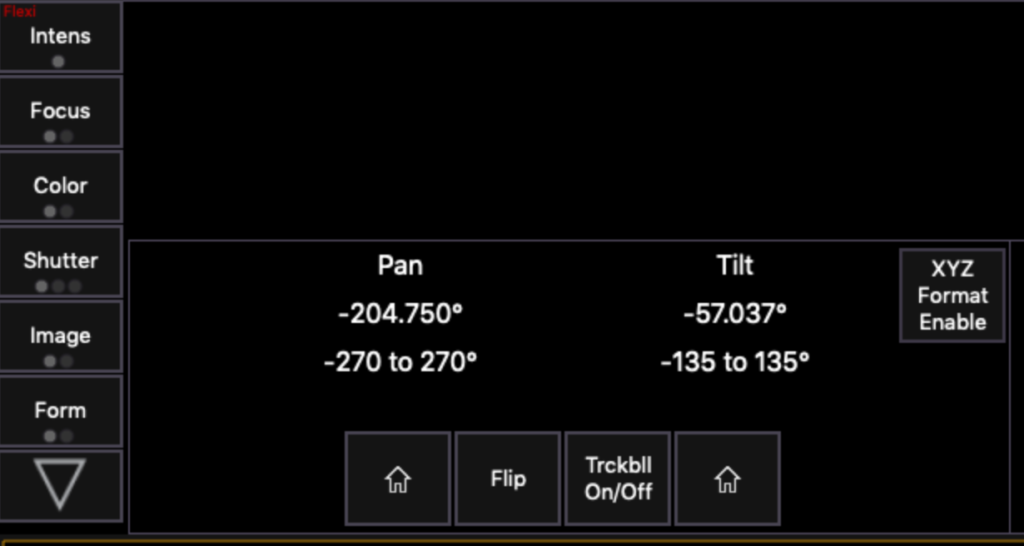Fun fact- most moving lights are capable of 540 degrees of pan and 270 degrees of tilt. Because of that, it is possible for you to have a mover pointing at one spot on the stage using three combinations of pan and tilt. Typically, people discover this when they are doing a live move between two focus positions and the light is “taking the long road” to get there. Possibly the light crosses into FOH to get where it is going, or smacks the cyc. You’ll know it when it happens, and Flip is the solution.
Flip is a function of virtually every moving light desk that automatically recalculates the pan and tilt values to choose another combination that will point at the exact same spot on the stage. Flip doesn’t look at your previous focus position and calculate the best possibility- it just chooses ANOTHER possibility. So it’s up to you to realize which one is best. Let’s find it and play with it.
Open your Encoder Display by going to your CIA area and touching the upward arrow in the lower left hand corner. (You can also press your Encoder Display button if your console has one.)

If you haven’t opened the Encoder Display before- welcome to a very useful view. It shows you every parameter as it relates to your encoders. It’s separated by tabs of function, changing when you use your Parameter Category buttons (Intensity, Focus, Color, Form, Image, Shutters). When you select Focus either by pressing the button or by touching the box on the left (not the one below).

For an example, I’ve opened the EOS Family Learning Series Level 4 file and the Mind the Gap file. I’ve taken fixture 101 and pointed it at the human center of the stage. I like to call this person Hamilton, but you should choose any name that makes you smile. My current Pan and Tilt values look like this:

To use Flip is easy as can be. With the fixtures selected, touch the {Flip} tile in the Encoder display area.

Instantly, the light flips around and my values have changed from Pan -25 Tilt 57 to Pan 155 and Tilt -57, but the fixture is still pointed at Hamilton. But wait- there’s more! I know you noticed that I said there were three value combinations that would point to the same spot on the stage- but many early programmers I know think there are only two options, and I know this because I used to be one of them. So press Flip one more time, and the light continues to point at Hamilton, but now the values a Pan -204 and Tilt -57.

A helpful hint- when you are trying to figure out which Flip is the best, it will be the one that is closest in value to the Pan Tilt values of the Focus Palette you have in the previous cue/palette. I typically view the previous palette in Blind to figure this out. Do keep in mind that sometimes it’s the first position you need to flip in order to make your show work well. I always take a few minutes to go through all of my focus palettes prior to programming to check for exactly these issues.
That’s all there is to it. Flip is a helpful function where the console does the math and you reap the benefits. What hidden functions like this do you enjoy on your console? Comment below.